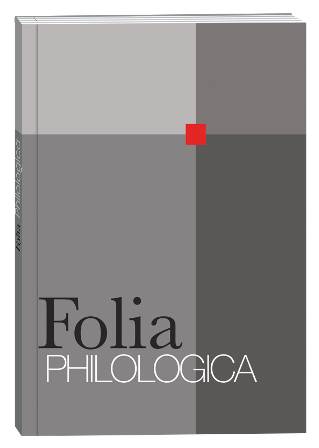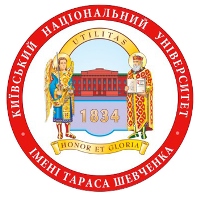PRACTICAL ASPECTS OF TRANSLATING ACRONYMS AND ABBREVIATIONS
DOI:
https://doi.org/10.17721/folia.philologica/2025/9/1Keywords:
acronym, abbreviation, transcoding, explication, equivalent translation, calculationAbstract
Under the current conditions of rapid development of information technologies, globalisation and the constant growth of international communication, the study of language abbreviations, in particular acronyms and abbreviations, is becoming particularly relevant in various fields of human activity. The article discusses the theoretical foundations and practical aspects of translating abbreviated language units in various communication contexts, including the fields of information technology, medicine, education, law and international politics. The aim of the study is to provide a comprehensive analysis of modern methods of translating language abbreviations and to identify difficulties related to cultural, social and contextual differences that arise in the process of interlingual information transfer. Particular attention is paid to the impact of acronyms on the target audience’s perception of the text’s content, as well as the importance of preserving the original sociocultural subtext when translating such linguistic units. It is shown that abbreviations often carry not only an informational load, but also a specific symbolic meaning, which requires a translator to have a deep understanding of not only the language system, but also the cultural context of the source. The article analyses typical mistakes in the translation of abbreviations and acronyms and their possible impact on the accuracy, clarity and adequacy of the final text. The relevance of the work is caused by the insufficient degree of study of this issue in Ukrainian translation studies, despite the obvious need to improve professional communication against the background of digitalisation, globalisation and internationalisation of society. The article proposes a number of strategies and approaches that help to preserve semantic accuracy, communicative efficiency and stylistic conformity when translating abbreviations in a professional environment. Specific examples of successful and unsuccessful translation of abbreviations in real texts from various fields of activity are presented. The results obtained can be used in theoretical studies of translation studies, in the practical work of translators, as well as in the field of intercultural communication and specialised translation training.
References
Baloh, V.O. (2003). Haluzeva leksyka v slovnyku ukrainskoi movy v 11-ty tomakh (1970–1980 rr.) (semantychnyi ta stylistychnyi aspekty) [Domain terminology in the 11-volume Dictionary of the Ukrainian Language (1970–1980): semantic and stylistic aspects]. Candidate’s thesis. NAN Ukrainy, Instytut ukrainskoi movy. Kyiv, 16 [in Ukrainian].
Bielozorov, M.V. (2001). Abreviatury-neolohizmy v anhliiskii movi ta yikh pereklad na ukrainsku (na materiali ekonomichnykh skorochen) [Abbreviation-neologisms in English and their translation into Ukrainian (based on economic abbreviations)]. Visnyk Sumskoho derzhavnoho universytetu. Seriia filolohichni nauky, 5 (26), 9–13 [in Ukrainian].
Boichenko, L.M. (1982). Strukturno-semantychni typy abreviatur i diapazon yikh dyryvatsiinoi aktyvnosti v suchasnii ukrainskii movi [Structural-semantic types of abbreviations and the range of their derivational activity in modern Ukrainian language]. Movoznavstvo, 5, 75–80 [in Ukrainian].
Harmash, O.L. (2006). Zapozichennia yak dzherela zbahachennia slovnykovoho skladu anhliiskoi movy [Borrowings as a source of vocabulary enrichment in the English language]. Nova Filolohiia: zbirnyk naukovykh prats. Zaporizhzhia: ZNU [in Ukrainian].
Harmash, O.L. (2008). Zbalansovanist protsesu popovnennia slovnykovoho skladu suchasnoi anhliiskoi movy [Balance in the process of vocabulary enrichment in modern English]. Visnyk Melitopolskoho derzhavnoho pedahohichnoho universytetu im. B. Khmelnytskoho, 1, 183–191 [in Ukrainian].
Hlosarii terminiv Yevropeiskoho Soiuzu [Glossary of European Union terms]. Retrieved from: http://europa.dovidka.com.ua (accessed: 18.03.2025) [in Ukrainian].
Hrin, O.O. (2010). Slovnyk mizhnarodno-pravovykh terminiv [Dictionary of international legal terms]. Układach O.O. Hrin. Uzhhorod: PP Danylo S.I. [in Ukrainian].
Duda, O.I. (2001). Protsesy terminolohizatsii v suchasnii anhliiskii movi [Processes of terminologization in modern English]. Kyiv: Naukova dumka [in Ukrainian].
Yenikiieva, S.M. (1999). Formuvannia ta funktsionuvannia novykh slovotvornykh elementiv anhliiskoi movy [Formation and functioning of new word-forming elements in English]. Candidate’s thesis. Zaporizkyi derzh. un-t. Zaporizhzhia [in Ukrainian].
Zatsnyi, Yu.A. (1998). Rozvytok slovnykovoho skladu suchasnoi anhliiskoi movy [Development of modern English vocabulary]. Zaporizhzhia: Zaporizkyi derzhavnyi universytet [in Ukrainian].
Karaban, V.I. (2004). Pereklad anhliiskoi naukovoi i tekhnichnoi literatury [Translation of English scientific and technical literature]. Vinnytsia: Nova knyha [in Ukrainian].
Karaban, V.I. (2003). Pereklad z ukrainskoi movy na anhliisku movu: navchalnyi posibnyk-dovidnyk dlia studentiv vyshchykh zakladiv osvity [Translation from Ukrainian into English: a manual and textbook for students of higher education institutions]. Vinnytsia: Nova knyha [in Ukrainian].
Kerpatenko, Yu.V. (2015). Abreviatsiia yak sposib ekonomii movnykh zasobiv u pidhotovtsi slukhachiv movnykh kursiv do komunikatsii u suspilno-politychnomu poli [Abbreviation as a means of linguistic economy in preparing language course students for communication in the socio-political sphere]. Naukovi zapysky. Natsionalnyi pedahohichnyi universytet imeni M.P. Drahomanova. Kyiv, 126, 70–77 [in Ukrainian].
Kovalenko, A.Ya. (2001). Zahalnyi kurs naukovo-tekhnichnoho perekladu: uchebnyi posibnyk [General course of scientific and technical translation: textbook]. Kyiv [in Ukrainian].
Luchuk, P.V. (2002). Anhlo-ukrainskyi slovnyk abreviatur ta akronimiv u haluzi mizhnarodnykh vidnosyn, ekonomiky i prava [English-Ukrainian dictionary of abbreviations and acronyms in the field of international relations, economics, and law]. Kyiv: Vydavnytstvo “Akademperiodyka” [in Ukrainian].
Nikolaieva, T.M. (2018). Perekladatski aspekty suchasnykh anhliiskykh abreviatsii [Translational aspects of modern English abbreviations]. Naukovyi visnyk Mizhnarodnoho humanitarnoho universytetu, 37, 107–110 [in Ukrainian].
Abbreviations and acronyms: Department for General Assembly and Conference Management. Retrieved from: https://www.un.org/dgacm/en/content/editorialmanual/abbreviations (accessed: 15.03.2025) [in English].
Acronym and Initialism. Retrieved from: http://en.wikipedia.org/wiki/Acronym_and_initialism (accessed: 15.03.2025) [in English].
Abbreviations You Must Know for International Trade. Retrieved from: https://tazapay.com/blog/abbreviationsyou-must-know-for-internationaltrade/ (accessed: 15.03.2025) [in English].
Chubenko, A., Loshytskyi, M., Pavlov, D., Bychkova, S., Unin, O. (2018). Glossary on prevention and counteraction to legalization (laundering) of criminal proceeds, terrorist financing, financing of proliferation of weapons of mass destruction and corruption. Kyiv: Vaite [in English].
Glossary of Import & Export Terms, Trade Compliance & Logistics. Retrieved from: https://www.mouseandbear.com/resources/glossary-of-terms.htm (accessed: 15.03.2025) [in English].
International Trade Abbreviations. Glossary. Retrieved from: https://www.bifa.org/media/4637644/107635_glossary_v1.pdf (accessed: 18.03.2025) [in English].
Kavera, N. (2020). Adaptation of English abbreviations in modern Ukrainian language. Theoretical and Didactic Philology, (33), 28–38. Retrieved from: https://tdp-journal.com/index.php/journal/article/view/198 (accessed: 18.03.2025) [in English].
Kuzmin, B.S. (2021). Peculiarities of translation of abbreviations in English scientific and technical discourse. Retrieved from: https://ir.duan.edu.ua/items/0263ddf1-d1be-434f-bafe-492eec068644 (accessed: 18.03.2025) [in English].
Chernovaty, L.M., & Kovalchuk, N.M. (2020). Thematic classification of English abbreviations of the names of organisations in the field of language teaching. Bulletin of V.N. Karazin Kharkiv National University. Series: Romance and Germanic Philology. Methods of Teaching Foreign Languages, (91), 198–204. Retrieved from: https://periodicals.karazin.ua/language_teaching/article/view/24776 (accessed: 18.03.2025) [in English].










